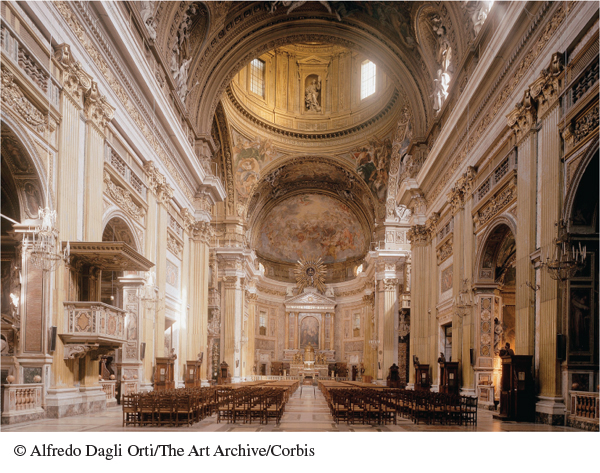New and Reformed Religious Orders
Just as seminaries provided education, so did religious orders, which aimed at raising the moral and intellectual level of the clergy and people. The monasteries and convents of many existing religious orders were reformed so that they followed more rigorous standards. In Spain, for example, the Carmelite nun Teresa of Ávila (1515–1582) traveled around the country reforming her Carmelite order to bring it back to stricter standards of asceticism and poverty, a task she understood God had set for her in mystical visions, which she described in her own writings. Some officials in the church criticized her as a “restless gadabout, a disobedient and obstinate woman” who had gone against St. Paul’s commands that women were not to teach. At one point she was even investigated by the Spanish Inquisition in an effort to make sure her inspiration came from God and not the Devil. The process was dropped, however, and she founded many new convents, which she saw as answers to the Protestant takeover of Catholic churches elsewhere in Europe. “We shall fight for Him [God],” she wrote, “even though we are very cloistered.”8
New religious orders were founded, some of which focused on education. The Ursuline order of nuns, for example, founded by Angela Merici (1474–1540), focused on the education of women. The daughter of a country gentleman, Angela Merici worked for many years among the poor, sick, and uneducated around her native Brescia in northern Italy. In 1535 she established the first women’s religious order concentrating exclusively on teaching young girls, with the goal of re-
The most significant new order was the Society of Jesus, or Jesuits. Founded by Ignatius Loyola (1491–1556), the Jesuits played a powerful international role in strengthening Catholicism in Europe and spreading the faith around the world. While recuperating from a severe battle wound in his legs, Loyola studied books about Christ and the saints and decided to give up his military career and become a soldier of Christ. During a year spent in seclusion, prayer, and asceticism, he gained insights that went into his great classic, Spiritual Exercises (1548). This work, intended for study during a four-
By the term “Spiritual Exercises” is meant every method of examination of conscience, of meditation, of contemplation, of vocal and mental prayer, and of other spiritual activities. For just as taking a walk, journeying on foot, and running are bodily exercises, so we call Spiritual Exercises every way of preparing and disposing the soul to rid itself of all inordinate attachments, and, after their removal, of seeking and finding the will of God in the disposition of our life for the salvation of our soul.9
418
Just like today’s physical trainers, Loyola provides daily exercises that build in intensity over the four weeks of the program, and charts on which the exerciser can track his progress.

Loyola was a man of considerable personal magnetism. After study at universities in Salamanca and Paris, he gathered a group of six companions and in 1540 secured papal approval of the new Society of Jesus. The first Jesuits, recruited primarily from wealthy merchant and professional families, saw their mission as improving people’s spiritual condition rather than altering doctrine. Their goal was not to reform the church, but “to help souls.”
The Society of Jesus developed into a highly centralized, tightly knit organization. In addition to the traditional vows of poverty, chastity, and obedience, professed members vowed special obedience to the pope. Flexibility and the willingness to respond to the needs of time and circumstance formed the Jesuit tradition, which proved attractive to many young men. The Jesuits achieved phenomenal success for the papacy and the reformed Catholic Church, carrying Christianity to India and Japan before 1550 and to Brazil, North America, and the Congo in the seventeenth century. Within Europe the Jesuits brought southern Germany and much of eastern Europe back to Catholicism. Jesuit schools adopted the modern humanist curricula and methods, educating the sons of the nobility as well as the poor. As confessors and spiritual directors to kings, Jesuits exerted great political influence.